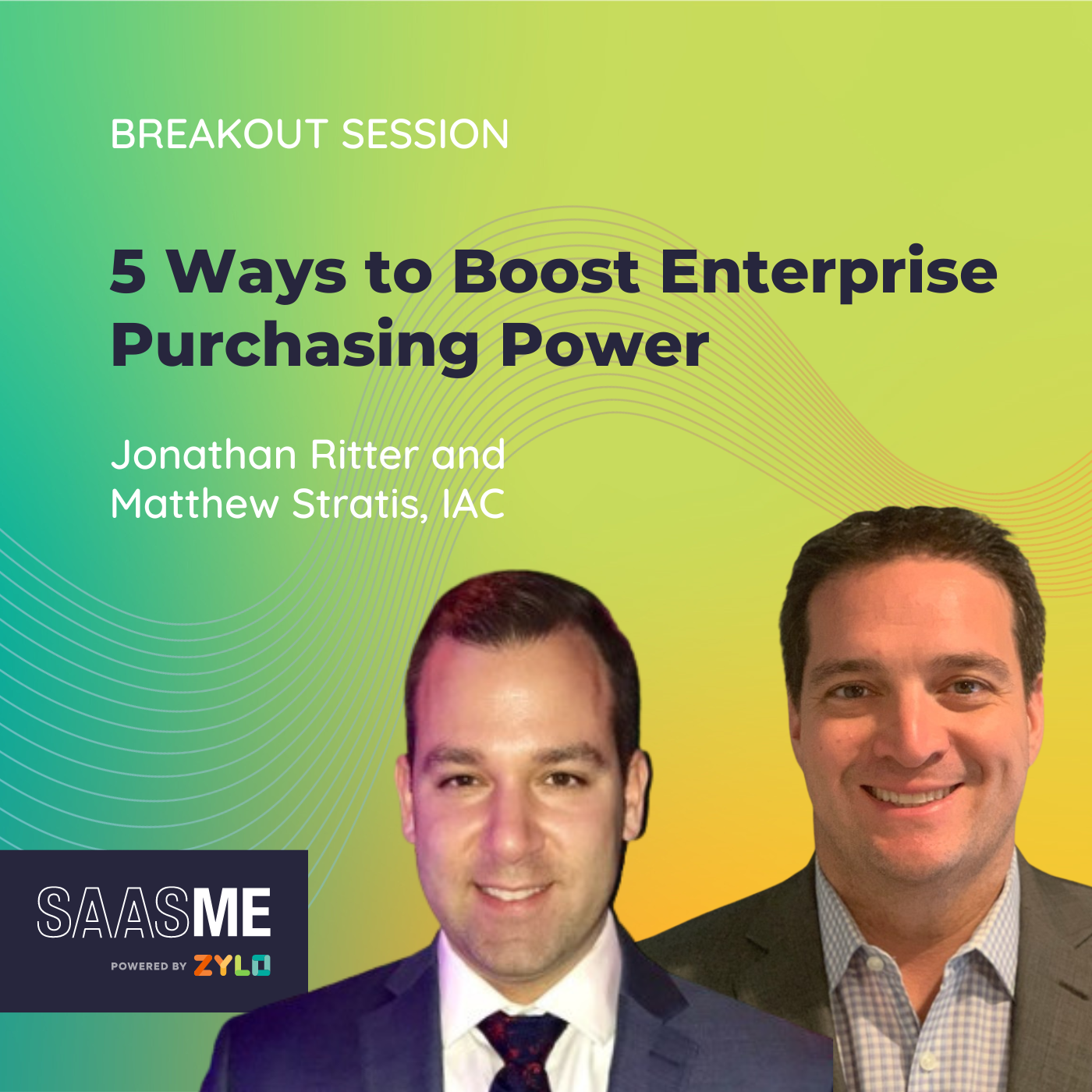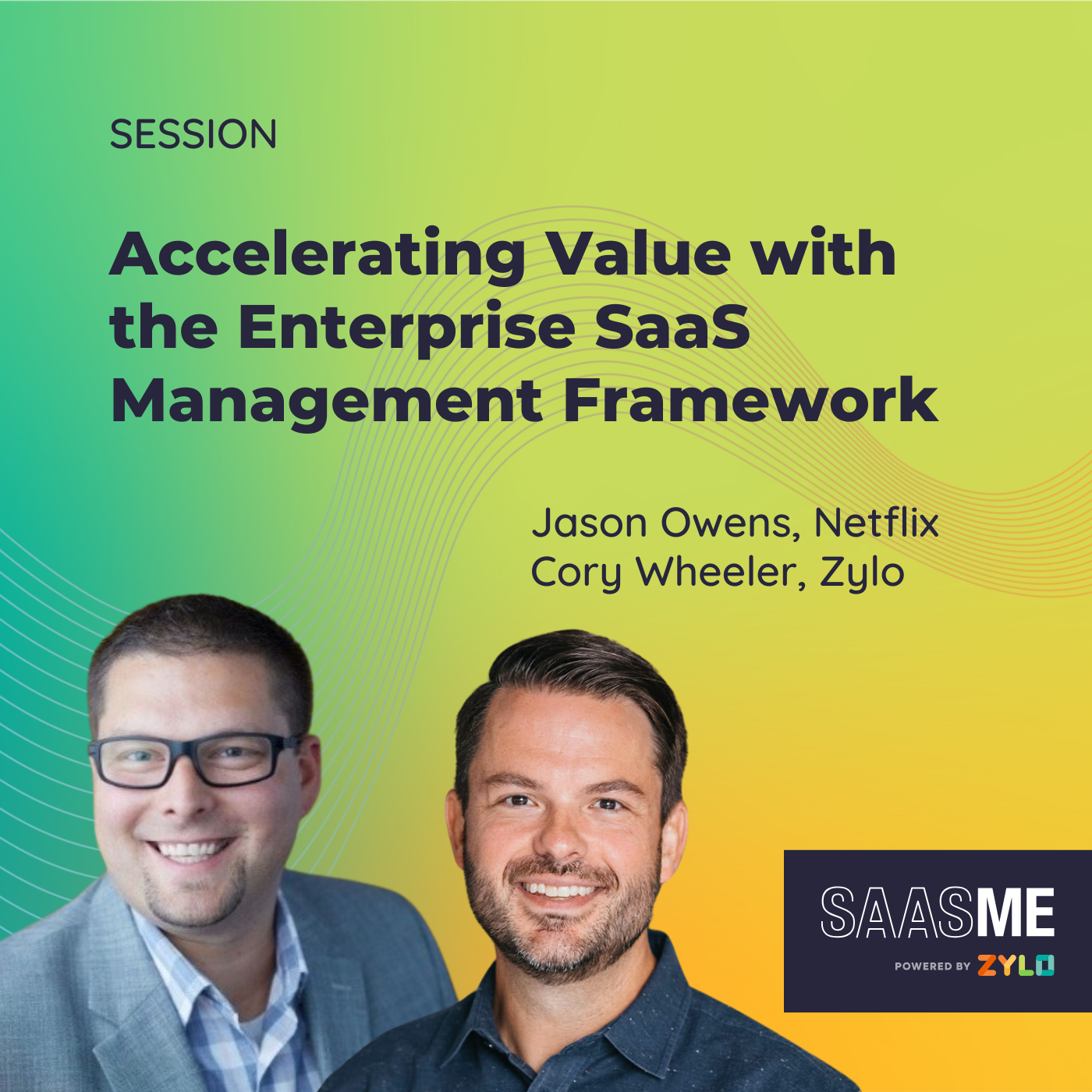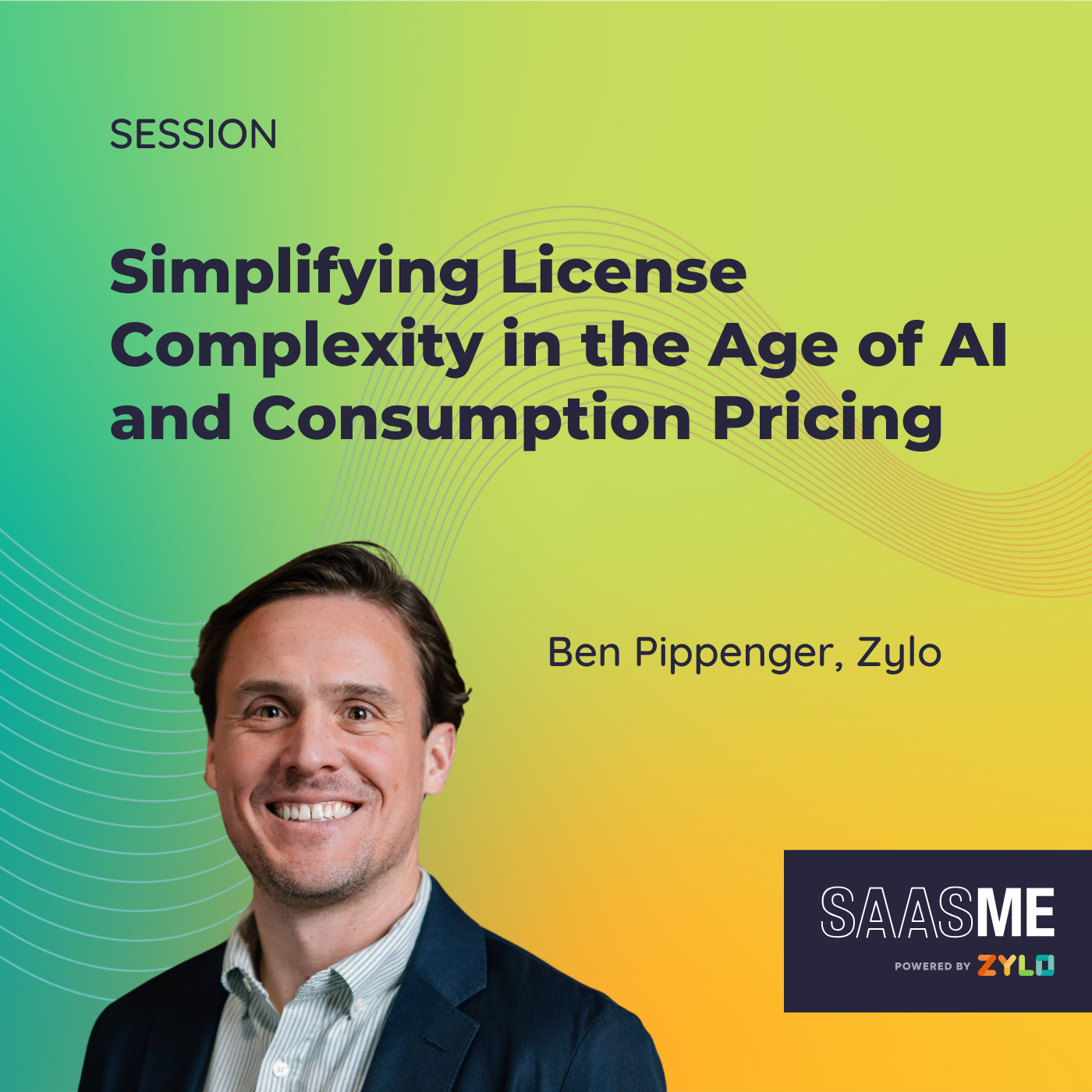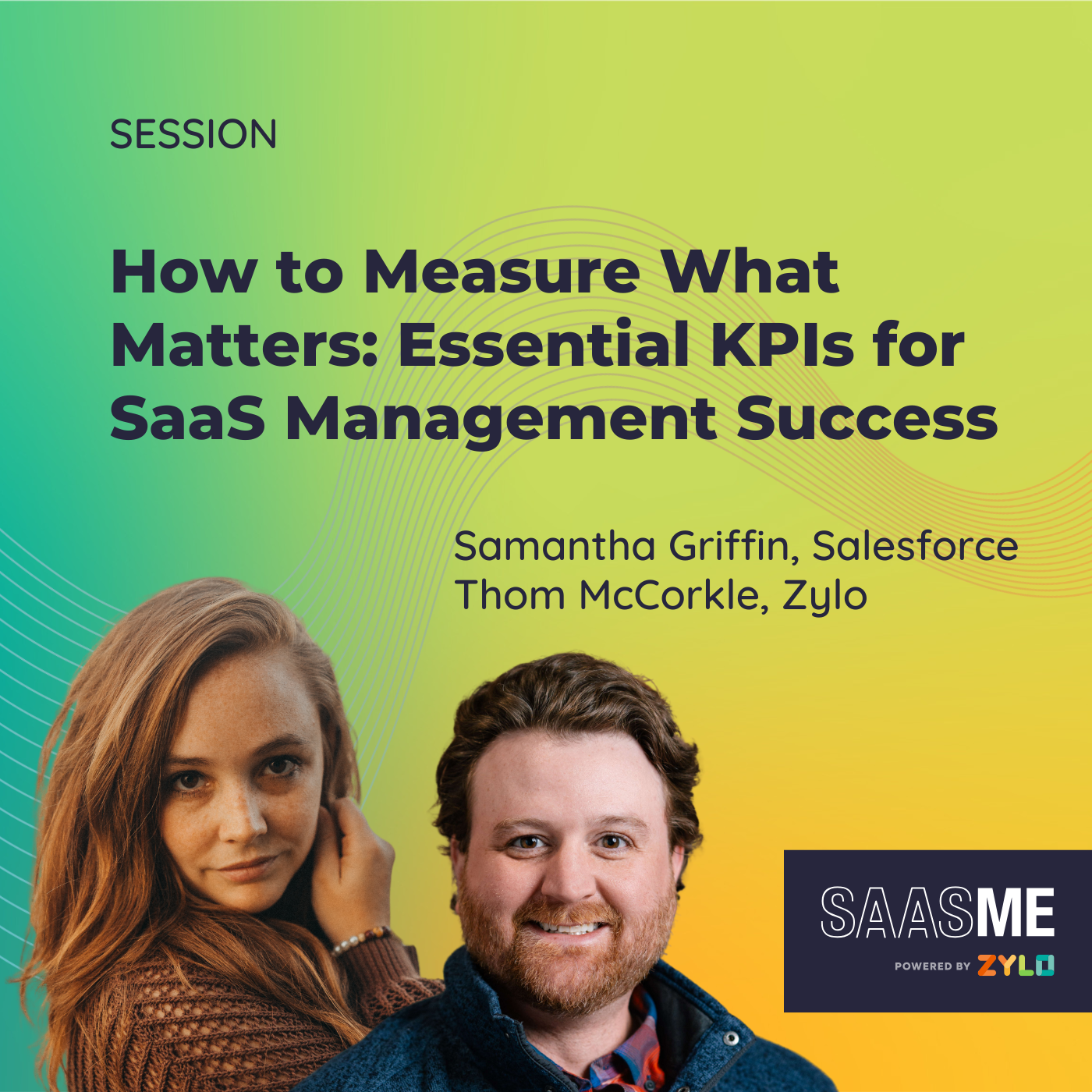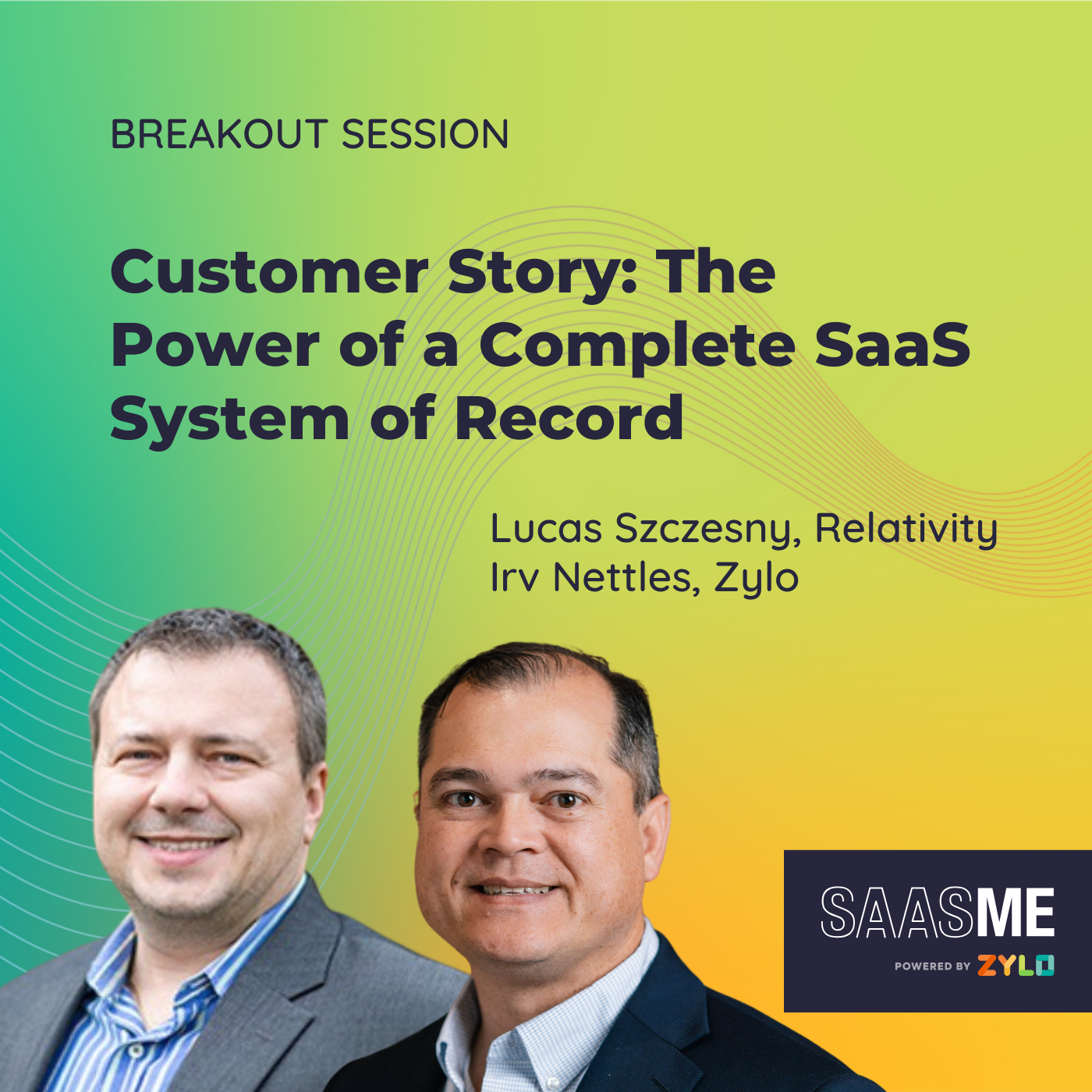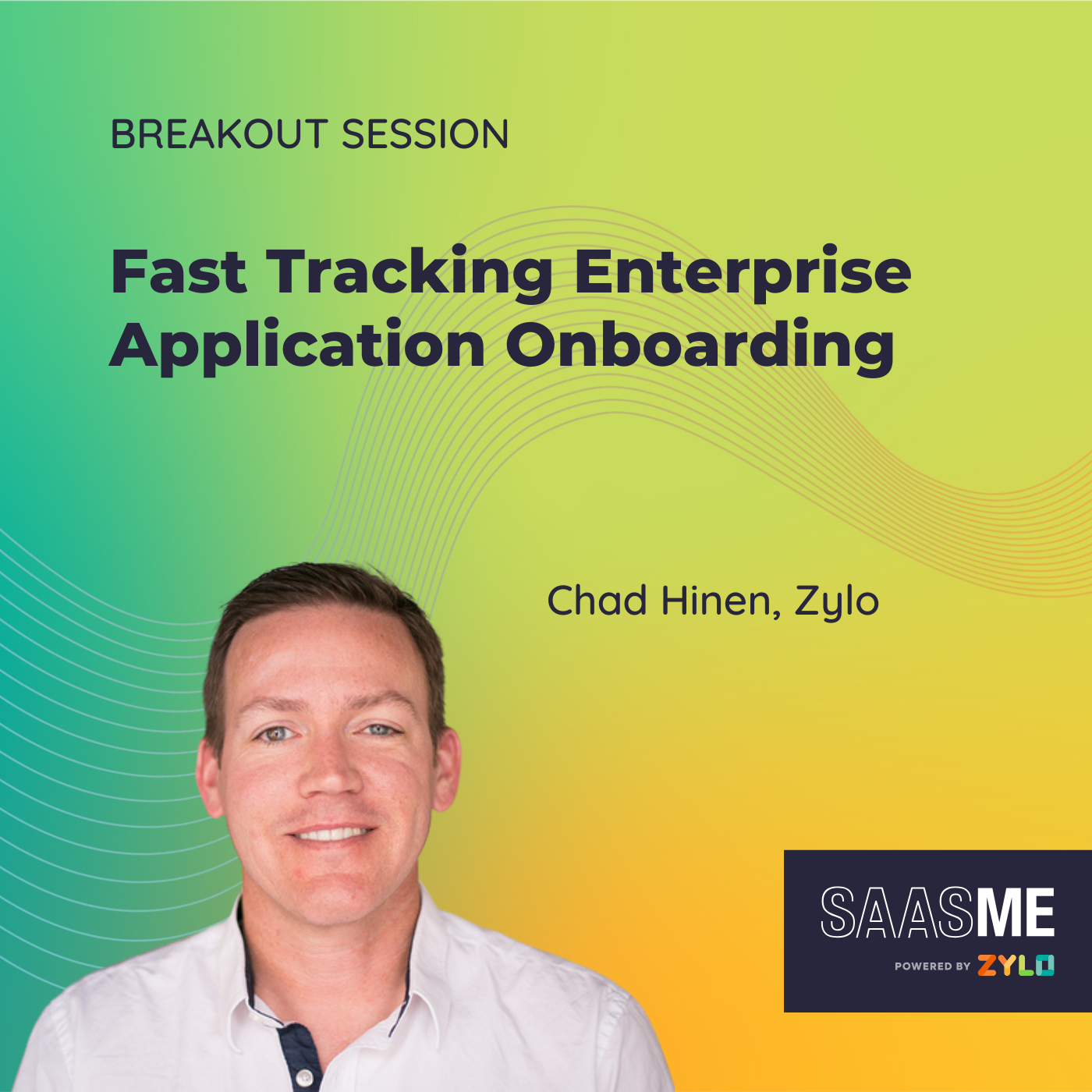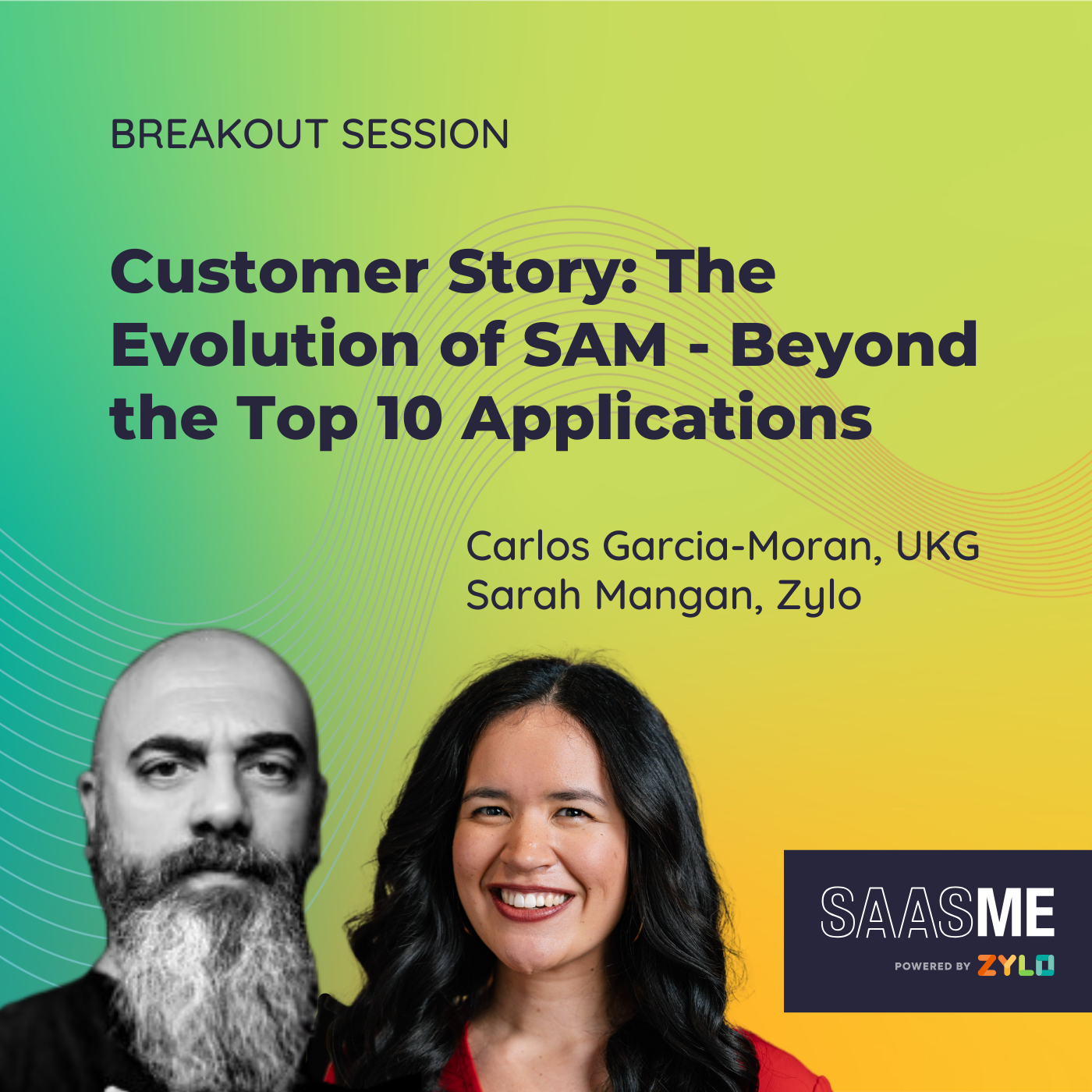5 Ways to Boost Enterprise Purchasing Power
- 0.5
- 1
- 1.25
- 1.5
- 1.75
- 2
Jonathan Ritter: Good afternoon, everyone. Thanks for being here. My name's Jonathan Ritter. I'm Vice President of Information Technology and Sourcing at IAC.
Matt Stratis: And I'm Matt Stratis. I'm the Director of PMO at IAC, and I work with John.
Jonathan Ritter: For those of you who probably have never heard of IAC, I guarantee you, at some point, have used one of our brands or investment properties that we have under our umbrella. IAC is a holding company. Underneath the umbrella, over the last 30 years, we've created companies like Ticketmaster, Expedia, Match, Tinder, Vimeo, and the list goes on and on. Today we have businesses such as Angie's, Dotdash Meredith, which is the parent company of People Magazine, Food& Wine, Investopedia, et cetera, Care. com, with several others as well. Additionally, we have minority stakeholders in businesses like MGM and Turo. So as you can imagine, given the number of businesses under our portfolio, throughout the years, we've always been looking for a tool that would help us take advantage of the entire enterprise and allow us to find cost savings, efficiencies, everything you think that you'd want to do with such a vast portfolio of companies, and bringing it together in one spot. Prior to adopting Zylo and using it within our environment, we had no idea really how inefficient our SaaS spend was, how much tool sprawl we had going on, which impacted several things for us, as we have pointed out here. To our budget, we were always coming in over because we thought our licenses were much less than they were. The investments that we were able to get with the SaaS products that we have, visibility as to what was going on across the board, there was tons of shadow IT, there was tons of tool sprawl that was going on, and the end result of that was that we didn't have the negotiation power that we wanted to have if we were looking at everything holistically from all of our businesses, so we felt we were losing out. Once we were able to put Zylo in place and really start getting a good view of all the tools that were used across the board, the number of licenses we had, reel in the licenses that were being expensed, the tools that people were just going out and getting their own, and they might've had a license for ABC tool but they liked using XYZ tool, so therefore we had two tools doing the same thing, two licenses, two uses of spend going on, we were finally able to get our arms around this and look at this holistically across the board, take the businesses, allow them to talk to each other, start to set standards, start to create a foundation, start to create processes around how are we going to start managing our SaaS spend, how are we going to start taking advantage of our buying power across the board, how are we going to start pushing onto the vendors so that we felt when we were coming out of every single negotiation like we had control of everything that was going on. And a lot of that started with understanding what was inside the environment and how we can find efficiencies from getting there with reducing the applications, or if we couldn't reduce them, understanding why which application was the right one for us to be using. So Matt, why don't you dive into a little bit of how we kind of identified what tools were out there, the usage that we had, and where we are today with it?
Matt Stratis: Yeah, so when we first started out, we didn't realize, as John mentioned, the amount of overlap in specific products across the organization and within the own business themselves. Sometimes one department doesn't know what the other department's using and they can also end up consolidating those. So we saw redundancies across, for example, survey tools, project management tools, product management tools. So right off the bat, once your data gets into the system, we're able to see through a categorization process and a dashboard showing us all that overlap across those different categories. So that enabled us to go to those businesses and reach out to their application owners to understand their use cases for using all the different applications that were out there, and some were actually orphaned and not being used or being used by a few people, so we were able to eliminate some of those applications, which created cost savings for us. Also, within those, you're getting to understand some of your utilization, which we'll get into further.
Jonathan Ritter: So one of the biggest things that we always look at is, with the data that we have, how can we strategize better to get the right pricing that we want for the products that we're buying, and even with doing that, one of the biggest questions we always get asked from our C- levels are, " How do you know you're getting a good price on what you're buying?" For years, we would use the data across the enterprise. If two of the businesses had the same tool, " What are you guys paying? What are the license counts?" We try to do it ourselves. We then shifted to actually going out and looking at third- parties to use their benchmarking tools to find out what they were seeing across the industry, but we always found that a lot of those third- parties were a lot of pay- to- play type of scenarios where they'd give you the information you want or they'd try to steer you in a different direction. So recently, over the past couple of years, we started using Zylo's benchmarking tool, which has really allowed us to narrow down the focus on size of the organization, the number of licenses that we're utilizing, get a good idea as to what price point we think is a good dollar value for us, what the vendors tell is good dollar value, and then compare that to all the data that they have in their hands. One example where this really helped us out was on a renewal that we did probably within the past six months. We've had a contract in place with this vendor for several years, and it started off as one that many businesses had their own agreement with. We then decided that we're going to consolidate it. During the consolidation phase, we got better pricing, we negotiated, we walked away feeling good. Over the years, there were modest increases here and there, and then recently, with the benchmarking tool, we're like, " Let's just compare this and see where we end up," and we actually learned that we were higher than a lot of the other companies that are within the Zylo arena that we're able to compare it to, which allowed us to now go out and have some real hard conversations with the vendor and say, " We have a good partnership, but here we are looking at this that we're getting not the best favorable pricing that we want, and we kind of feel like we were duped on this." It was a tough conversation at the end, but everything worked out because of the long partnership that's been there, but it's one example where without having the Zylo piece in there, we'd probably still be doing the same thing we were doing and feeling like we got a good price all along but in reality we weren't. A couple other areas where we really think we benefit... more strategically is getting ahead of any renewals, getting ahead of any new tools that are coming in, and what I mean by getting ahead of it is working with business owners well in advance to know what their plans are. So something that we've started doing within IAC across the entire portfolio is when we start going into budget season, we start looking at this across the entire enterprise as to, " What tools are you using? Why are you using them? Do we have overlap? Can we just consolidate some of the contracts? Can we replace tools with other tools that people are using and start getting better pricing on our overall spend for one specific contract that we're going into?" We have seen that even if it doesn't work out where we can't get the benefits from a pricing perspective, the one thing that we are doing is we get the businesses starting to talk to each other, and they're starting to learn lessons from each other as to what works well, maybe how somebody's doing some type of process and can that be adopted elsewhere. So even if it's not just a matter of cost savings that you're getting out of it, by trying to get ahead of it and getting businesses to talk to each other, we're getting a lot of benefits out of that as well. Lastly, I mean, with everything, you also get visibility into all the upcoming renewals. So if you do that during your budget cycle, you can plan out your whole pipeline throughout the year, stay ahead of it, have the conversations with the vendors early. If you feel like the conversations are hitting a roadblock, doing it earlier on gives you enough runway to really, if you wanted to go out and do an RFP, or get some competitive bidding, or whatever the case may be, it's much easier to do that when you're doing that well in advance. I'll let Matt talk about how we kind of get the app owners at each business involved in the conversation and some of the benefits that we've really seen by doing that.
Matt Stratis: Yeah. So we've reached out to each businesses and internal in our own reach out to some of the IT teams, and they in turn reach out to the application owners across their organization. And for example, we had a alerting tool, where we've sent out the usage data that was configured across the platform and we realized just by downgrading a SKU, we were able to save$ 50,000 across the enterprise. So that was a good win there. Some of the other interesting things we noticed was when provided some of this data, one of the organizations came back and realized, " Hey, I didn't realize I had the same user logging in twice with two different email addresses," and they were able to free up many licenses that way. So we found things through the tools really helped the application owners free up some of these licenses. One of the other things that we noticed was, you have all these licenses, not only about, " Hey, where can I cut and save?" We found certain applications, for example our data analytics software, that they are actually using it almost a full utilization, which is great because that means, hey, we're using the product to its fullest potential, we're not over- provisioned, we're not under- provisioned. We're kind of like at that Goldilocks moment where it's just right, and that's where we want to get with all of our applications. And this usage data empowers those owners over time where they can see the usage 30, 60, 90 days, depending on the application, to see how they can tailor their teams. One other thing I can say is, one thing we're looking at right now is a collaboration software platform. As you know, COVID caused a lot of people to purchase a lot of different softwares out there to get their teams working, and as we're coming out of a post- COVID environment, we're finding some of those applications and the amount of users, we can either downgrade those applications or consolidate them. So those are some of the advantages that we've seen so far with some of this integration data across the platform.
Jonathan Ritter: So we'll get into a little bit how we got to the point that we're at now, because it did take some time and it took getting a lot of people on board in order to be successful with this. You hear time and time again like no project's really going to go well unless you have an executive sponsor, you have someone that's really going to back this, they're going to help push this along where you need it to be, and we ran into that as well. We did have our executive sponsor but not across the entire businesses. We kind of had it from the top- down, looking, and we were trying to push this into the business where we were. Some of the things that we kind of learned were, to what Matt was just talking about, getting the app owners involved, having them create the right teams internally on their side that can execute on really getting the hard numbers and the savings and getting rid of any excess licenses and spend that's out there. So some of the things that we did was we started reaching out. We first did it at the corporate level for the contracts that we owned and the license counts that we owned so we can actually really understand what savings we were seeing and what needs to be done to get that materialized. We then reached out to each individual business, starting with the procurement and sourcing team to kind of understand what their pain points are, how they're managing spend, and kind of sharing what we've done so far and see if that could be utilized across their environment. From there, we worked with them to work with the right app owners and business teams and get sponsors individually at each brand, which then they started doing, they started finding their cost savings, and little by little, this thing just kind of started to snowball because people were like, " Well, I saved X amount of dollars here, and now I saved a whole much more money on this one." And once you start building that story, people get excited to share it across the board, and that just starts bubbling up to the C- levels. And for us, I know we were sitting in, it was one meeting where it was basically all the CFOs, and we're kind of starting to highlight the numbers that we're seeing savings on, and all of a sudden, everyone's like, " Well, can we do this on more things? Can we start to span this out more? What do we need to do to make sure that everything's getting done right?" And once that starts to happen, once you start putting the real numbers to it, the execs are going to get excited about it. They like to save money. Sorry. They like to know that there's nothing wasteful out there, so you're getting your arms around the licenses that are there, you know who's using what product, you know that it's the right product that's being out there, you're starting to cut back on shadow IT, and I think overall, it's a win- win for everybody. The sourcing and procurement teams are looking good because they're reeling in any waste, they're finding the savings that they need. The app owners are also looking good because they now have control over who's using their product, how they're using the tool, are they getting the benefits that they planned on getting by using that tool. And then all of that rolls up to the financial side, which at the top, at the CFO level, they're happy because we're saving money and we're being as efficient as possible. So I think it's got to be in small baby steps for large enterprises, and you can't really force it onto someone and say, " You need to go do this." I think the way to do it is you work together, you kind of build the use cases with the different teams that I mentioned, you find those wins, and then it becomes a celebration for everybody. And to that matter, once you have this in place, once you have the foundation, once you have the framework, you can start just kind of running with that, and Matt's been doing a great job on our side. I'll let him talk about the framework that he put in place and how we're utilizing that going forward.
Matt Stratis: Yeah, so there's a lot of lessons learned here. I think John hit the nail on the head. The beginning is maybe to find the low- hanging fruit that you'll work with, you know, someone from the Zylo team and some of that shadow IT spend, and you start highlighting things real quick for them, and as soon as they start to see it, it will start to gather. So starting to tell that success story with the low- hanging fruit or something that's really where you can find right away from the benchmarking, " Hey, we're really overpaying here." And I think one of the struggles sometimes, if you're really overpaying on a certain software title, you need to have a backup plan to say, " We can leave this platform because we're way overpaying for it," and you give those owners a chance to say, " Hey, looking out a year out, I don't know if we're going to be able to reduce this contract to a point where it hits the midpoint." So we need to have a backup option so that if we want to, we can switch to a certain tool, and some tools you can, some tools you can't, but we have found some of the times we can do that. Also, some of the things that we would do is I'm starting to view it as a collaboration tool. Once you get everybody to buy in, you're going to be able to take all these teams across the board, share the successes, and see, " Hey, someone's using this software, we're using that. What are some of the things that you like with this? And maybe I'll move to that platform." But really, the success starts around organization, knowing where your contracts are, your financial data's in a certain product, which can easily most likely be important, but it's all the other applications across the enterprise where you need to team up with individuals to help them integrate that product. So those different integrations we talked about that Zylo has, you need to work hand in hand and work with those team members, and in most part, it's hard to get their time, but once you get it and you start showing them how quick and easy it is, the successes start to happen. So it's a team effort. If you have the project sponsor, like John said from the beginning, it's an effort across all the board. You can't just do it yourself.
Jonathan Ritter: So just as we conclude here, I think just some of the key things to think about when you're looking at purchasing across a large enterprise, multiple businesses, and how to leverage better negotiation tactics is to put a tool like Zylo in place where you're able to see what you have across the board, start looking for where you can easily consolidate on the low- hanging fruit, understand what the easy wins are, get those out of the way so you can get some real numbers to it. Once that's done, start drilling into each business and having the conversations with them to understand what their process is, who are the key people are that you can work with at each business. Let there be wins individually, and then eventually, that's all going to roll up across a portfolio like ours, where everyone, at the end of the day, is successful by being more efficient, finding enough cost savings out there, and keeping the executives happy with what everyone's doing.
Matt Stratis: I think I would add that once you have this tool in place, now you have one single pane of glass that you're going to go to in the future where it comes time for renewals, it's going to be so much quicker, the amount of time that everyone's going to save, because you're going to have at your fingertips the cost, the contracts, the renewal information when it comes in, and for many applications, the usage data, and by the time it comes for that renewal, it's not going to be a painful process. You're already going to know all the key data points you need to make that decision of whether to move forward with the product or renew it. Thank you, everyone, for joining our presentation.
Jonathan Ritter: Thank you.
DESCRIPTION
Are you leaving savings on the table? This session is your key to unlocking hidden budget potential. We'll share a powerful arsenal of strategies, including app and contract rationalization techniques, that boost your purchasing power. Learn how to negotiate your way to better deals, freeing up resources for innovation and growth.
Speaker(s):
- Jonathan Ritter, VP, Information Technology at IAC
- Matthew Stratis, Director, PMO at IAC

